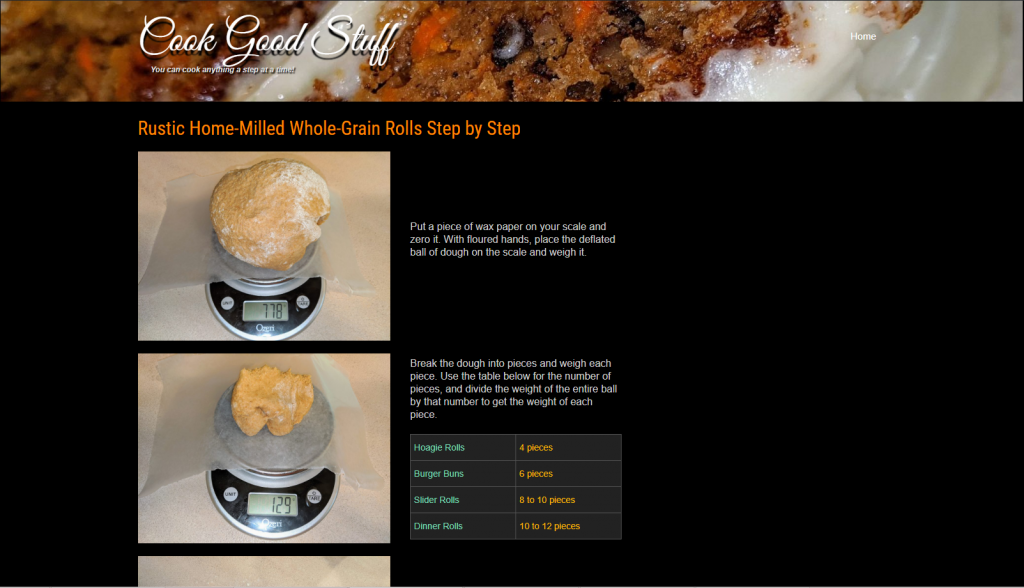
Measure 1-1/2 cups of wheat berries. Ours were 45 grams per quarter cup, so we weighed 270 grams.
If you’re not milling your own flour, skip down a few steps and add your flour and additives along with the salt.

Set your flour mill on the finest setting.

Pour the berries into the input hopper of your flour mill and start the motor on speed 10.

You will see flour coming out of the mill.

Collect the flour in the bowl of your stand mixer.
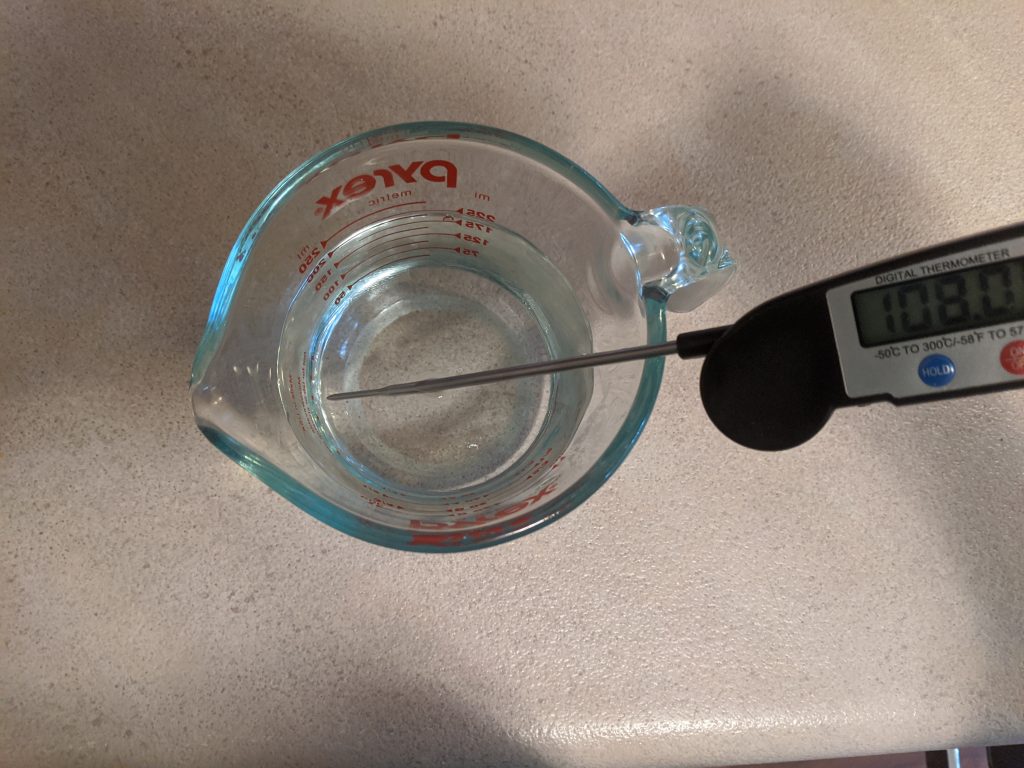
Use a quick read thermometer to adjust your water faucet between 105° F and 110° F and measure out 1 cup.
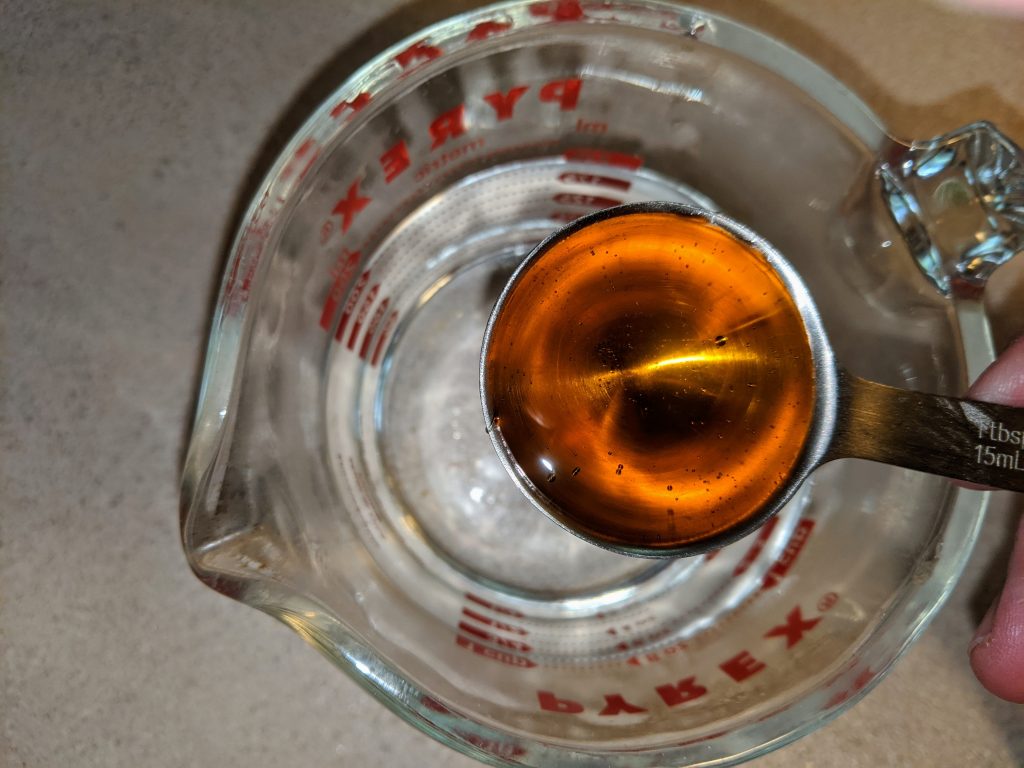
Add the honey to the water.

Add the molasses and stir thoroughly with a tablespoon or whisk.
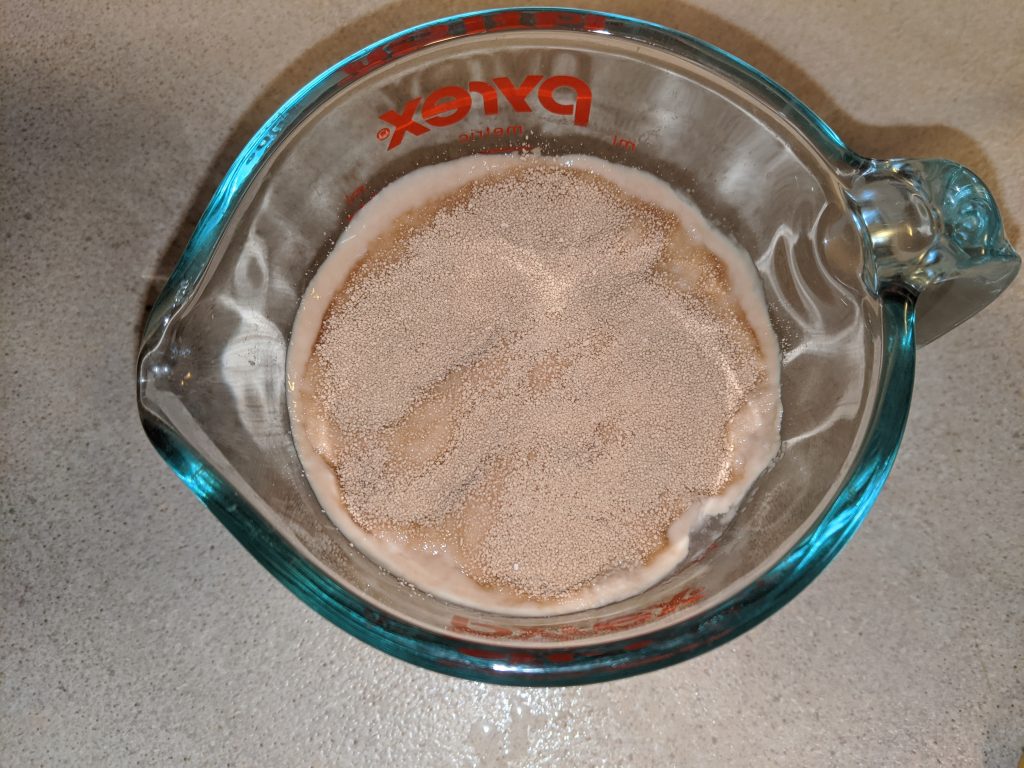
Sprinkle the yeast on the surface of the sweetened water and let it acclimate a while until it’s all damp and you can see foaming.
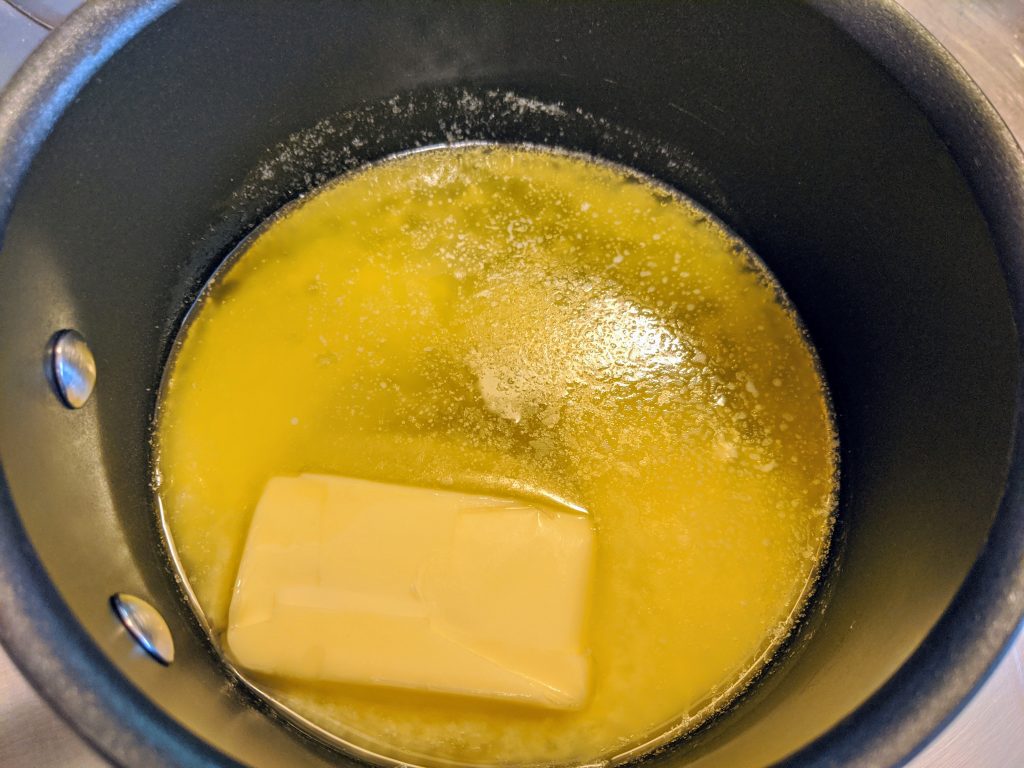
Melt the butter in a saucepan or the microwave.
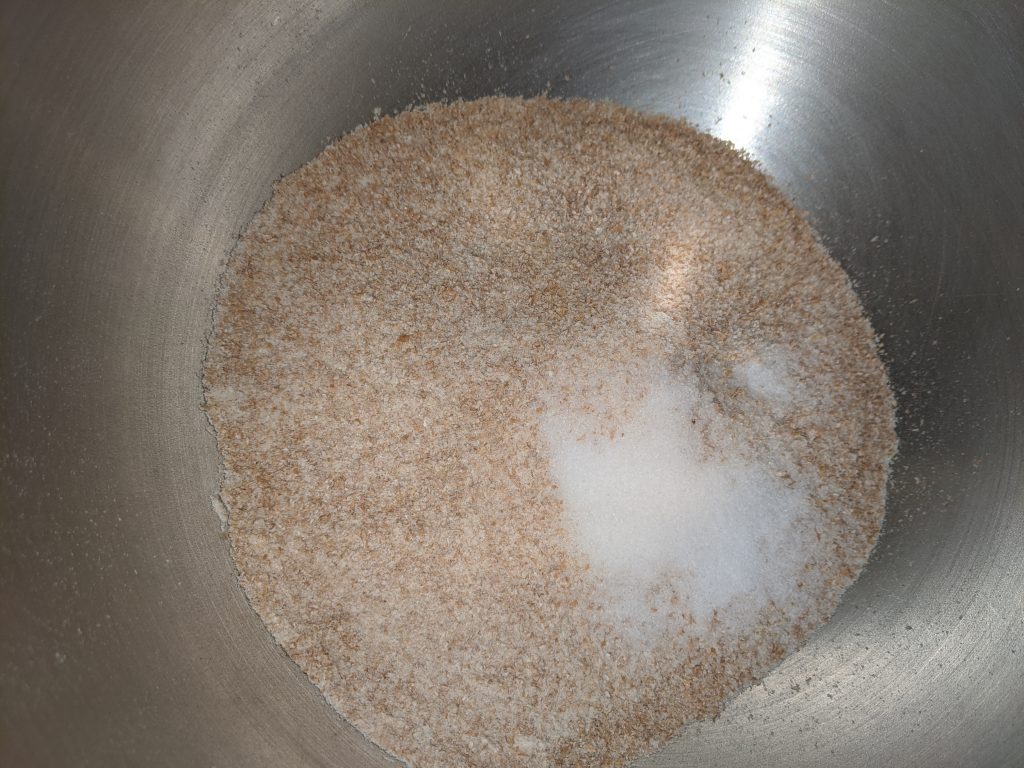
Add the salt to the flour.
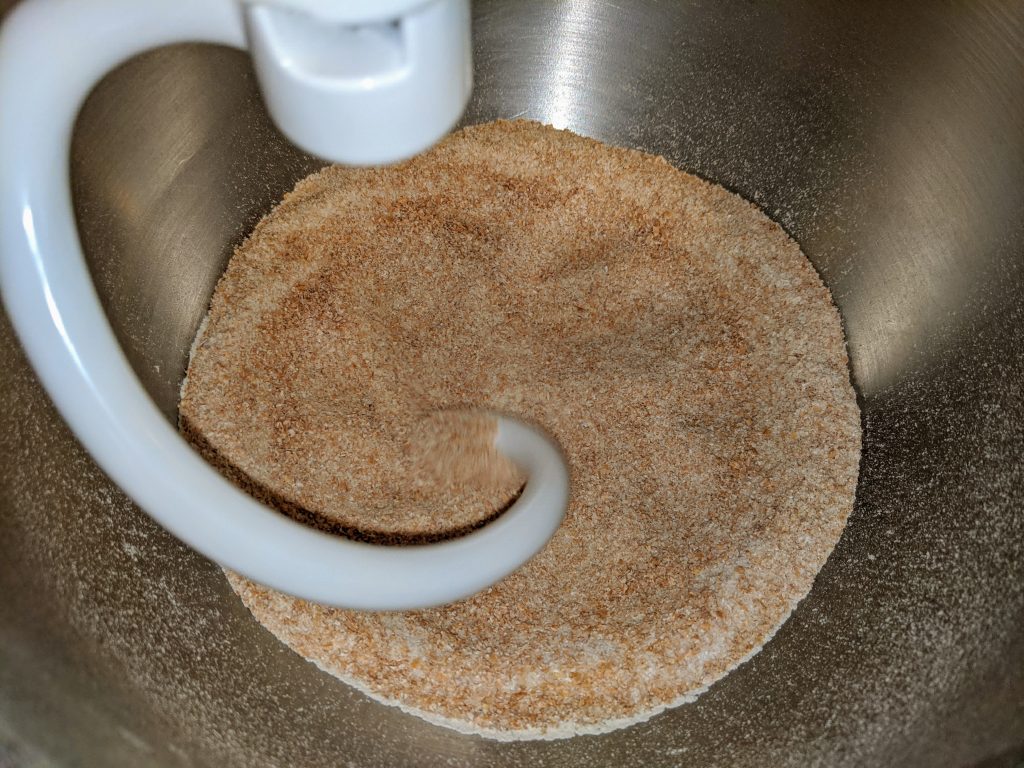
Put the bowl in your stand mixer with the dough hook and let it stir the flour and salt on low speed while you prepare the yeast mixture.
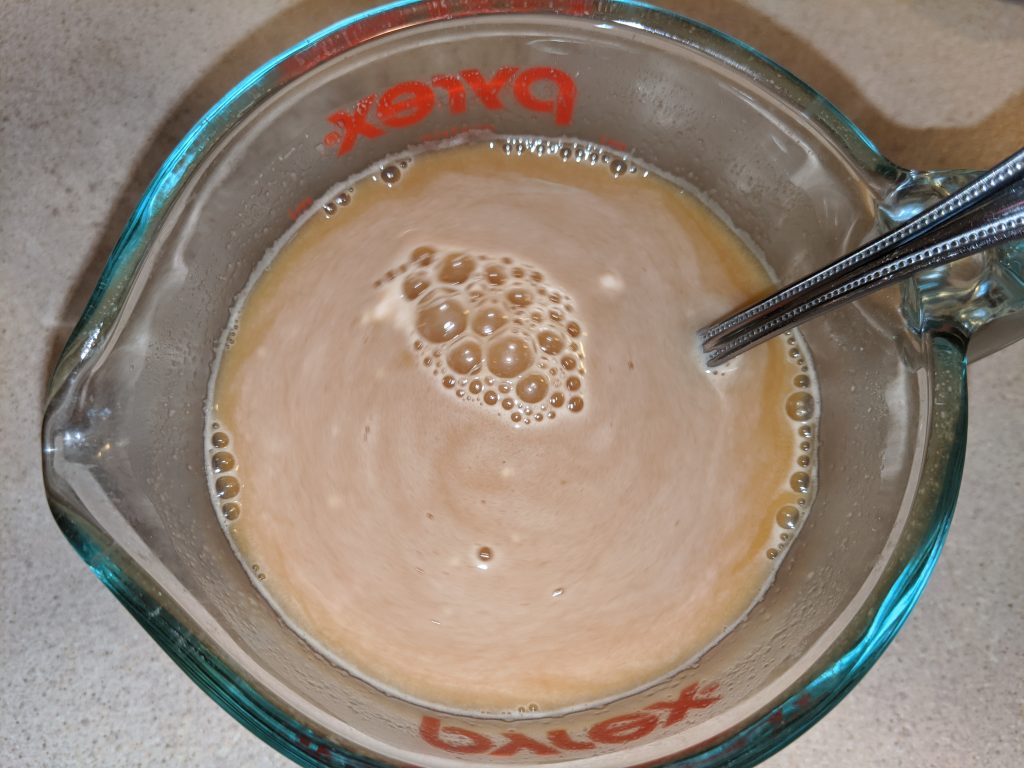
Stir the yeast mixture with a tablespoon or a whisk until the yeast, molasses, and honey are all completely dissolved.
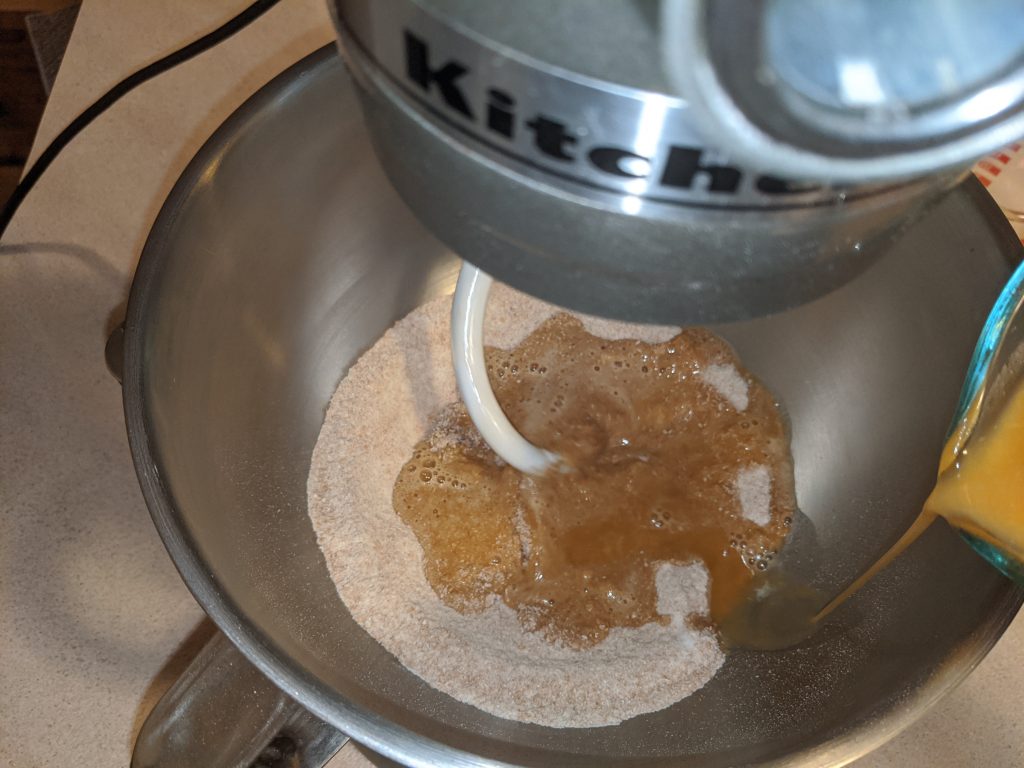
With the mixer still running on low, drizzle in the melted butter.

Slowly drizzle in the yeast mixture and turn the mixer up to speed 2.

Add all-purpose flour a quarter cup at a time and let each addition incorporate.
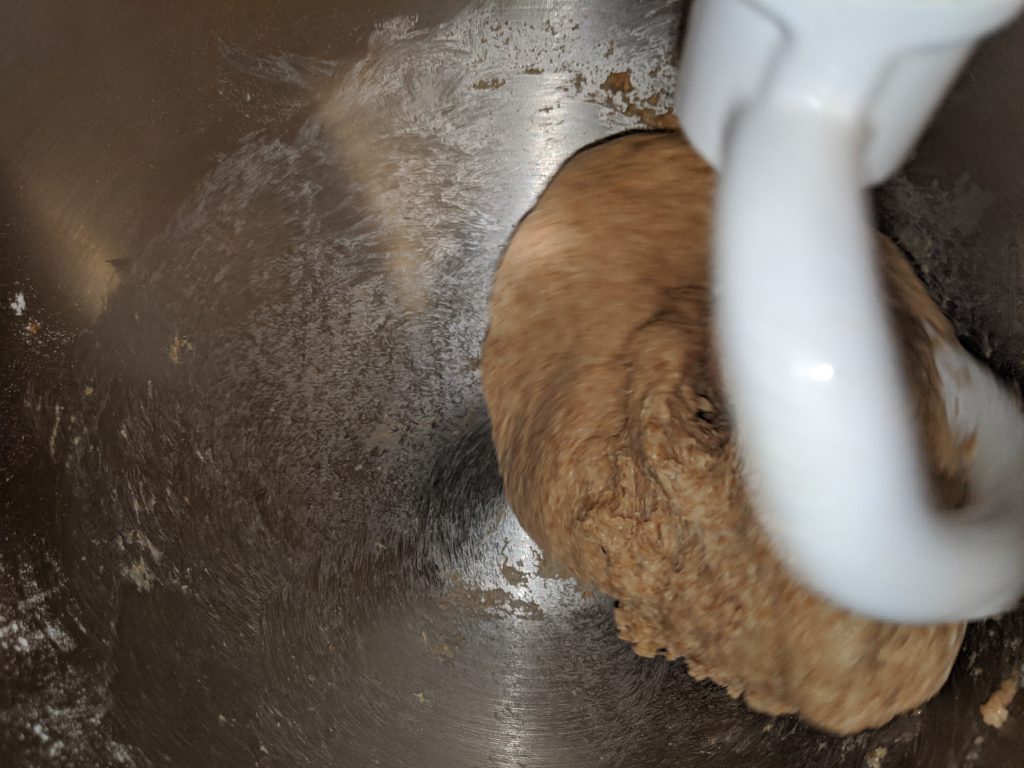
When the mixture forms a dough and follows the hook, you’re done with the quarter cups.

Now start adding all-purpose flour a tablespoon at a time, again letting each addition incorporate.

When the dough cleans the side of the bowl, you’re done adding flour.
Allow the dough hook to knead the dough for 4 minutes.

After kneading a while, let the dough and your mixer have a rest. This rest will soften the dough and keep it from getting stiff before it gets supple.
Wait 5 minutes.
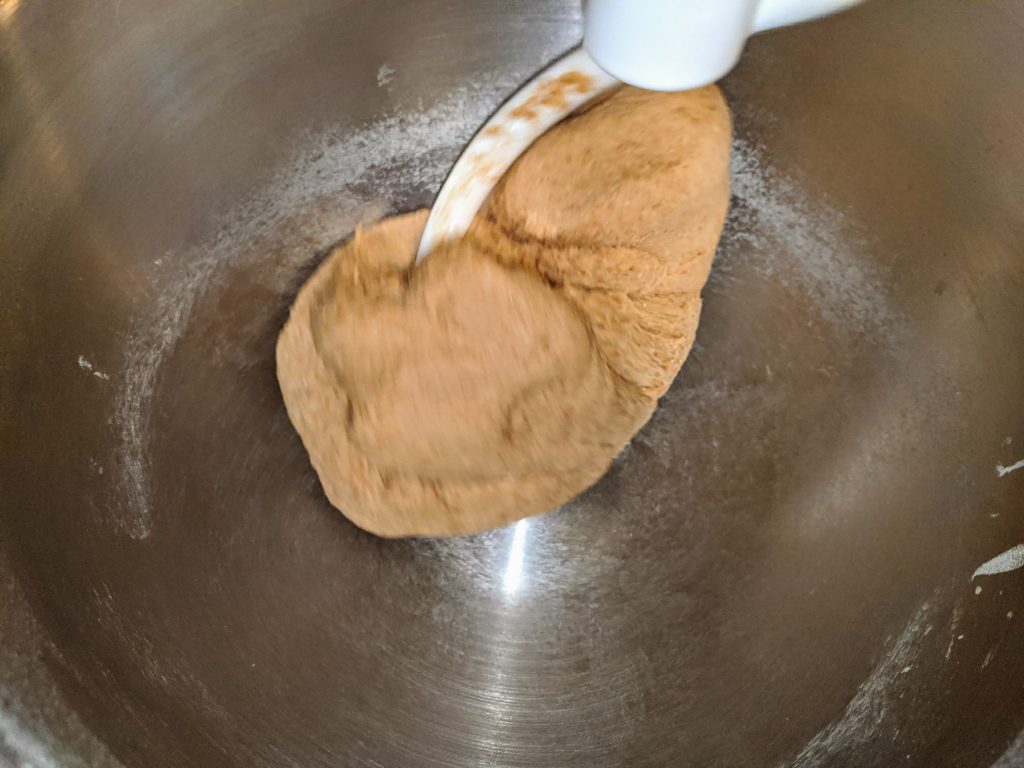
Now turn the mixer back to speed 2 and let it knead the dough a second time.
Allow the dough hook to knead the dough for 4 more minutes.
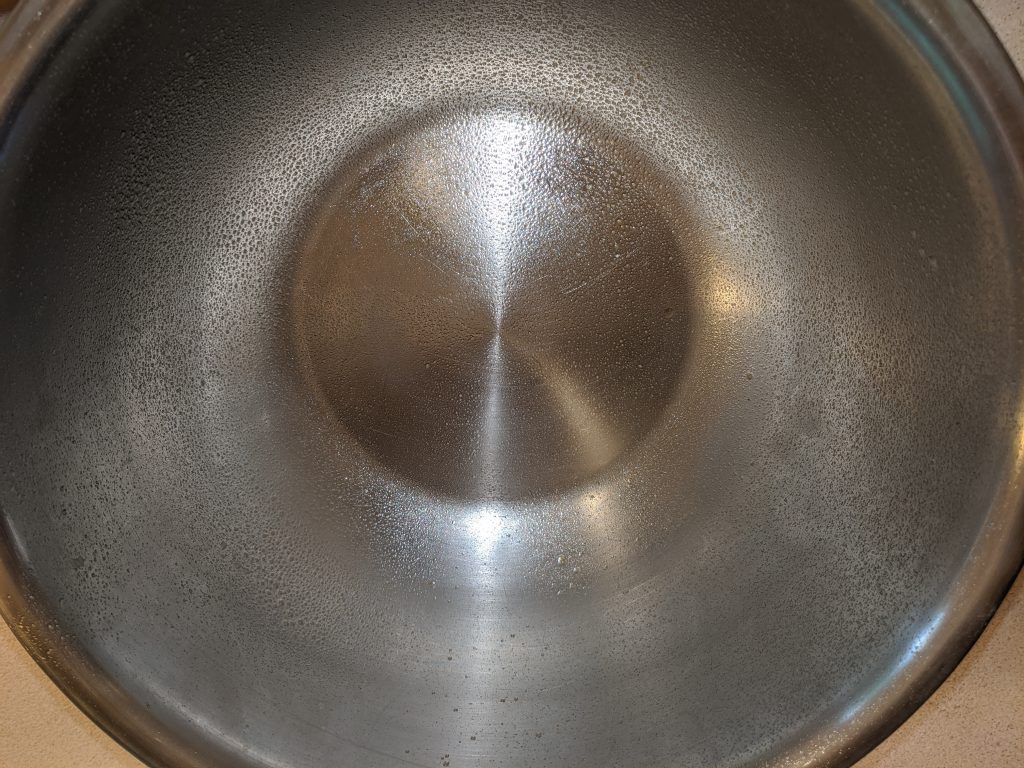
While it’s kneading, spray the inside of a large bowl lightly with cooking oil spray.
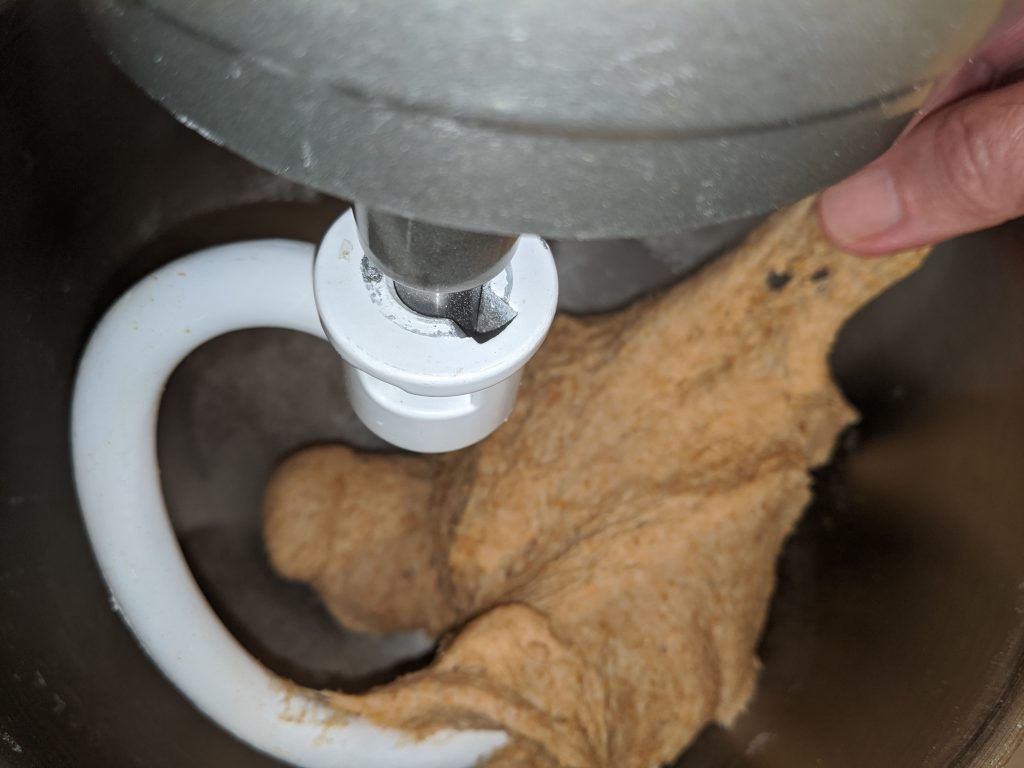
Check the dough to see if it’s done. This is rough dough, so you won’t be able to make a window pane, but it should stretch as pictured here.

With floured hands, push the dough off of the hook, pull it out of the mixer bowl, and place it on a floured counter. Make the dough into a ball, repeatedly stretching the top with one hand and tucking it under, and turning the ball as you go. Place the ball into the oiled bowl, hit it with a quick light shot of cooking oil spray, and cover with plastic wrap.
Allow dough to rise in a warm place, preferably about 70° F, for one hour.
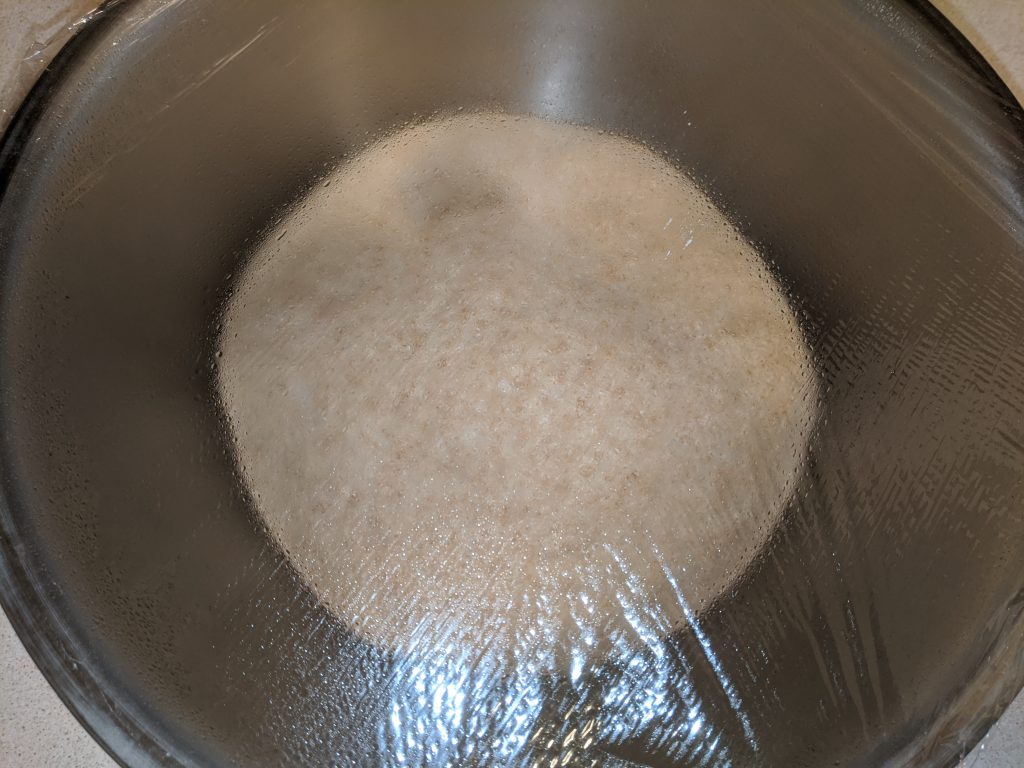
After an hour, the dough will have doubled. If not, wait a while longer. When it’s ready, if you want a more developed bread flavor, place the covered bowl into the refrigerator.
Optionally refrigerate at least 4 hours, preferably overnight.
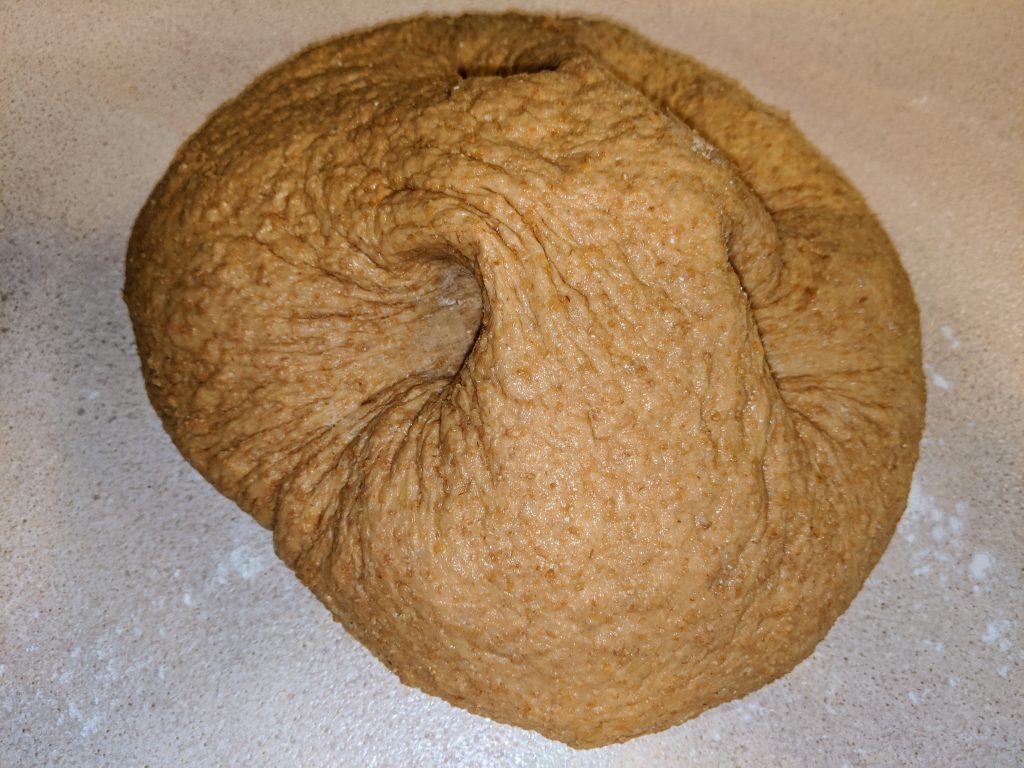
The dough won’t be pretty at this point, but it’s okay.
Place the dough on a floured counter, and sprinkle it with flour. Lightly squeeze out the rise with your hands.
↓ If you are making a boule of bread, continue with the instructions below:
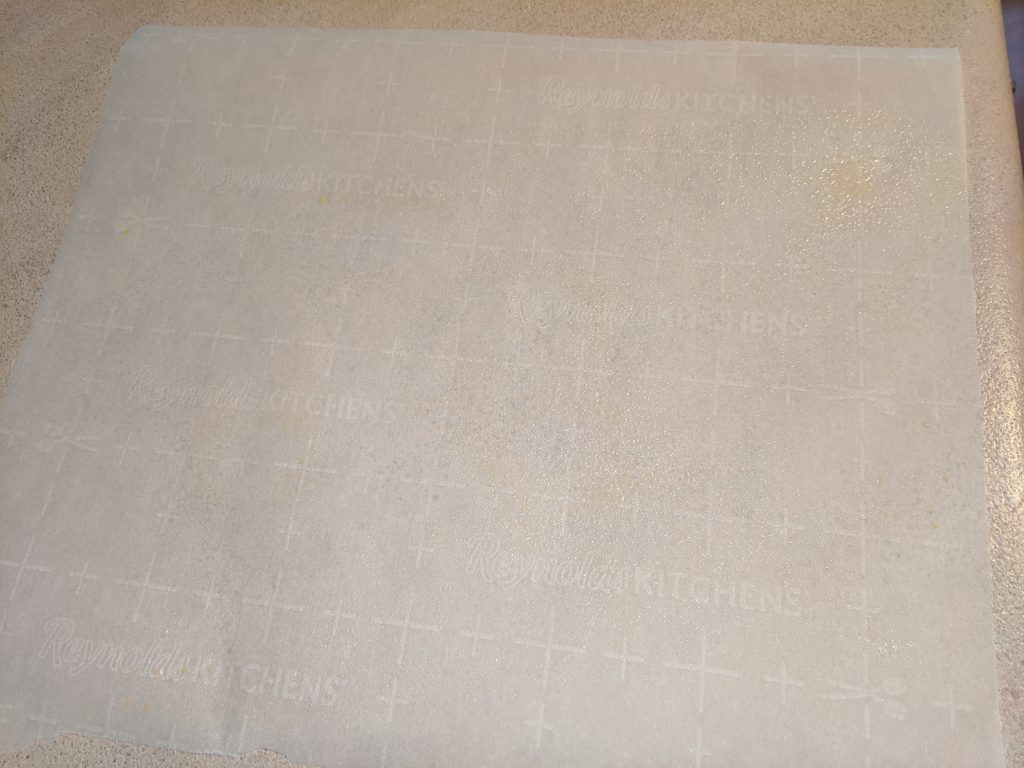
Prepare a piece of parchment paper the size of your pizza paddle by spraying it very lightly with cooking oil spray.
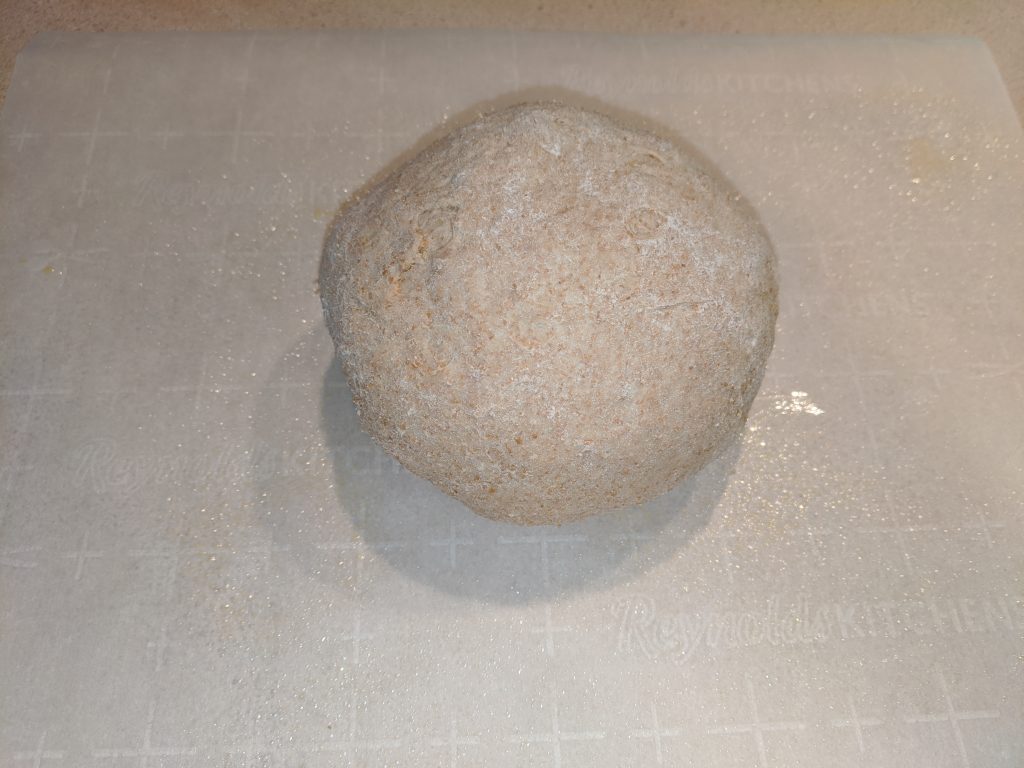
As above, stretch the top repeatedly as you form the dough into a ball. Place the ball on the oiled parchment paper, and keep in a warm place (about 70° F) for about 45 minutes.
Allow to rise for about 45 minutes.
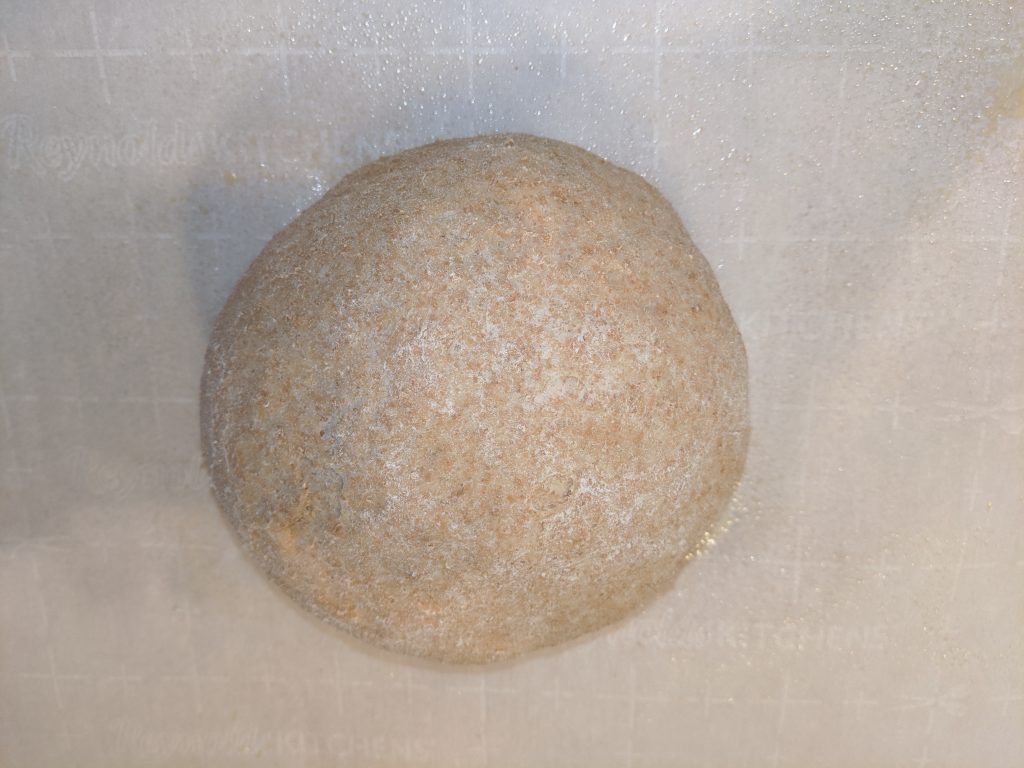
The dough won’t quite double this time, but it will grow some.
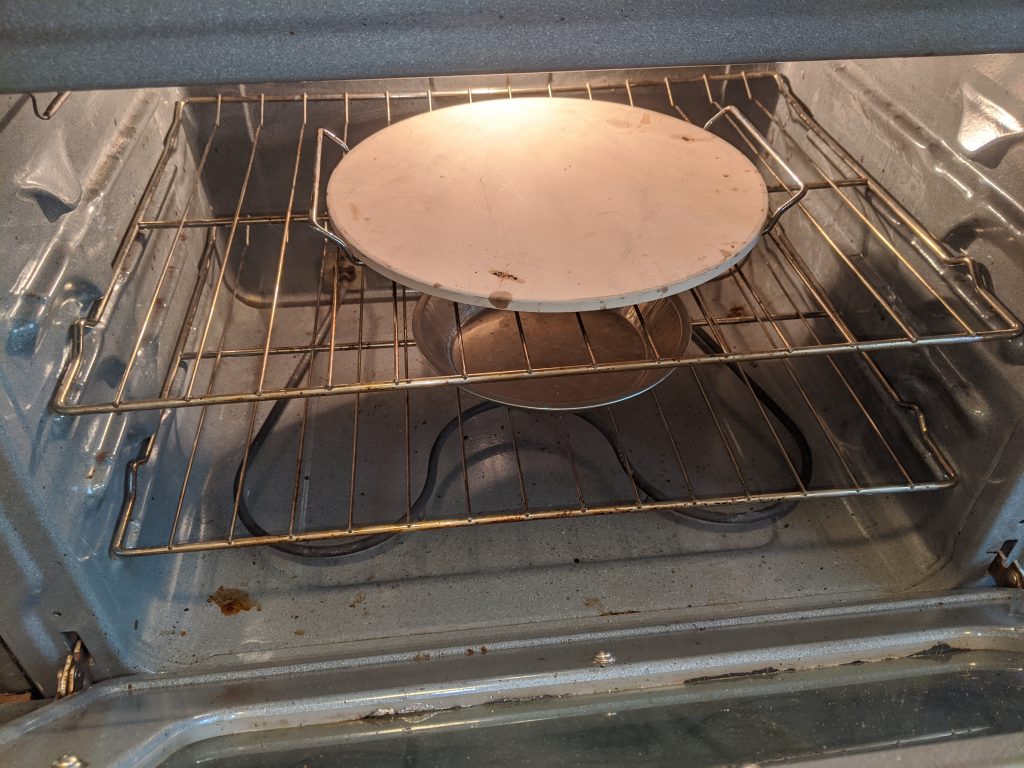
Place a pizza stone on a rack in the center of your oven. Place a metal pan on a lower rack or the bottom of the oven.
The lower pan and water are optional. They will make steam which keeps the crust soft at first so the yeast can rise the dough, and also helps dissolve sugars on the surface of the rolls that caramelize for that final crispy outside crust.
If you have a Dutch baking oven, that’s preferable to this arrangement.
Preheat oven to 450° F.
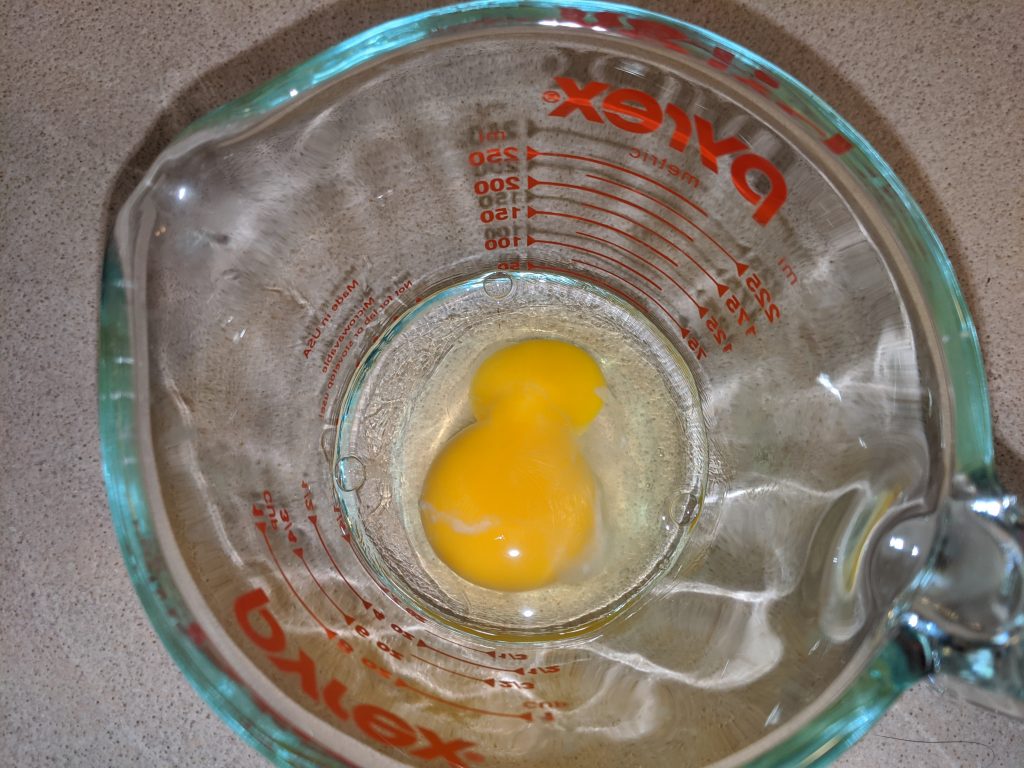
Break an egg into a small cup or bowl and add about a tablespoon of cold water.
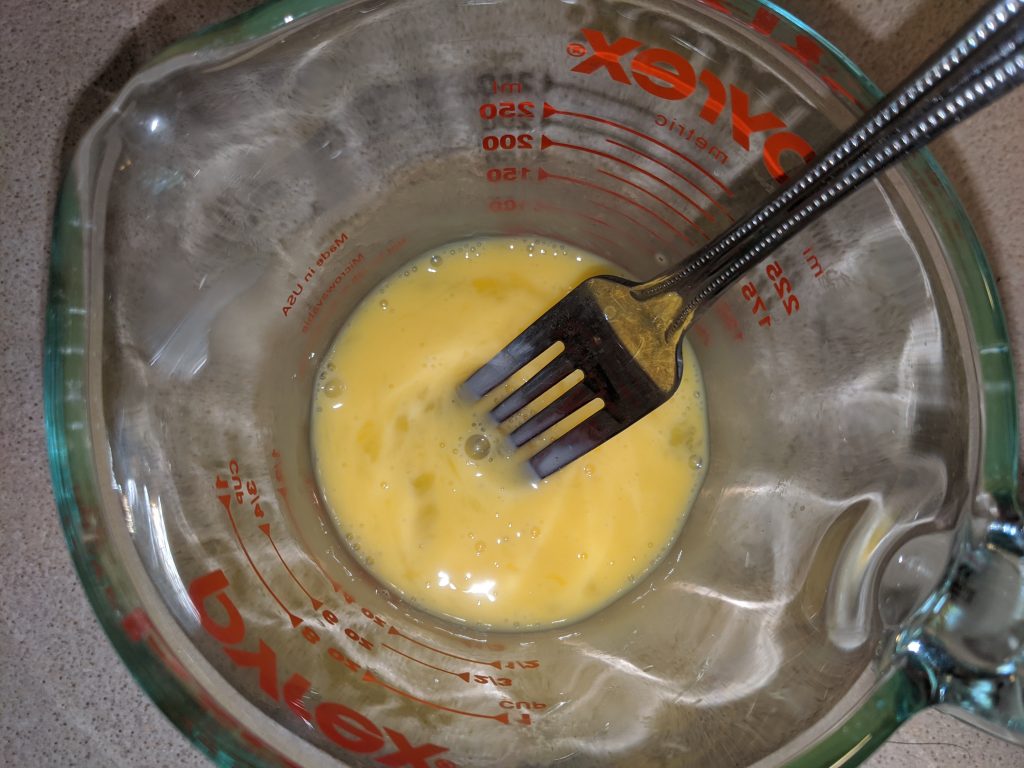
Beat the egg with a whisk or a fork.

Use a pastry brush to lightly coat the ball of dough with the egg wash.
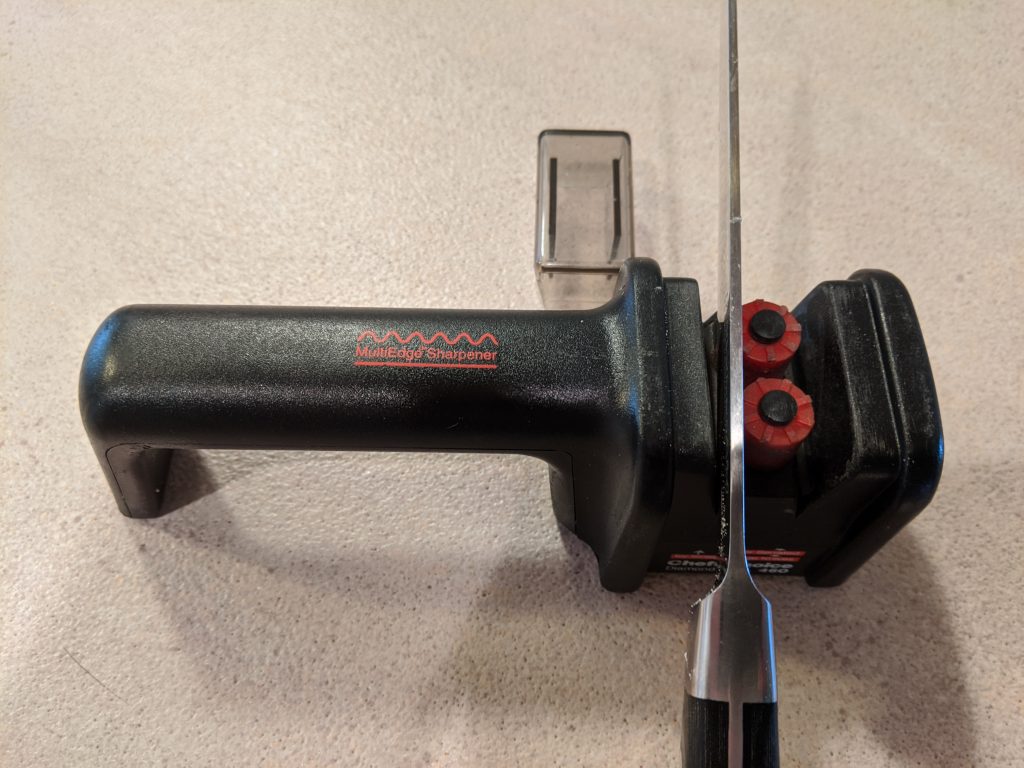
Be sure your knife is really sharp for this, and sharpen it if necessary.

Make slices about half an inch deep. Slash, don’t drag, so that you’re not tearing the dough.

You can make two or three parallel slashes or an X. I decided to draw this shape.

Prepare a cup of hot water in advance and have it ready by the oven.
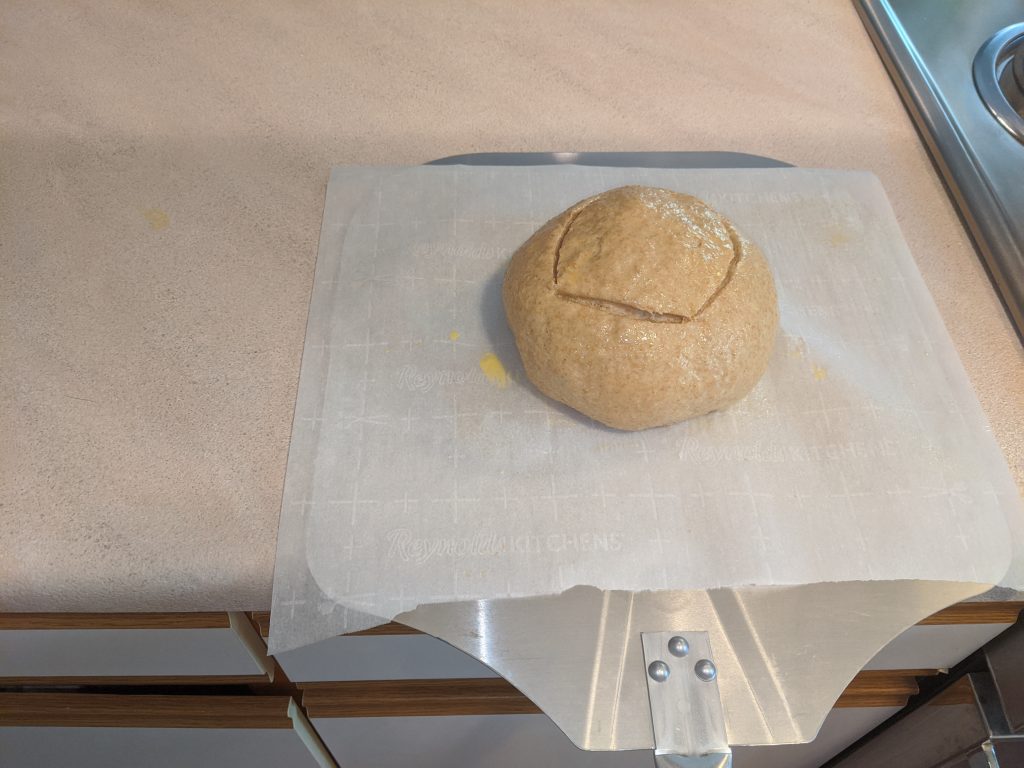
Put the dough on your bread peel or pizza paddle, parchment and all.
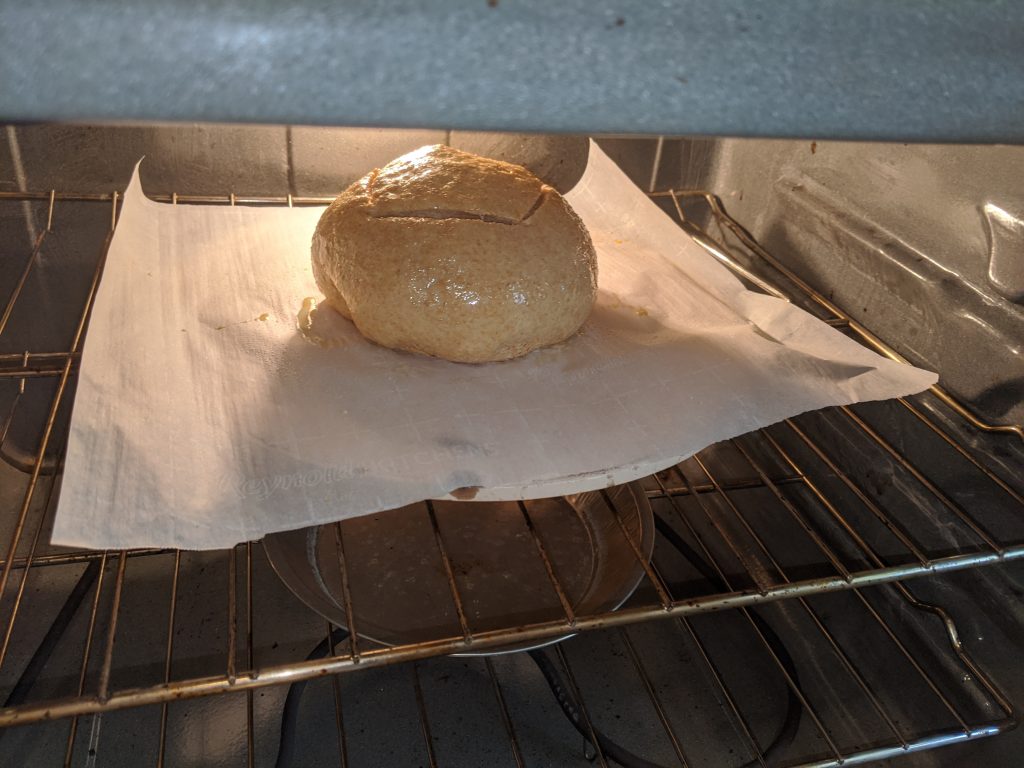
Slide the parchment onto your pizza stone.
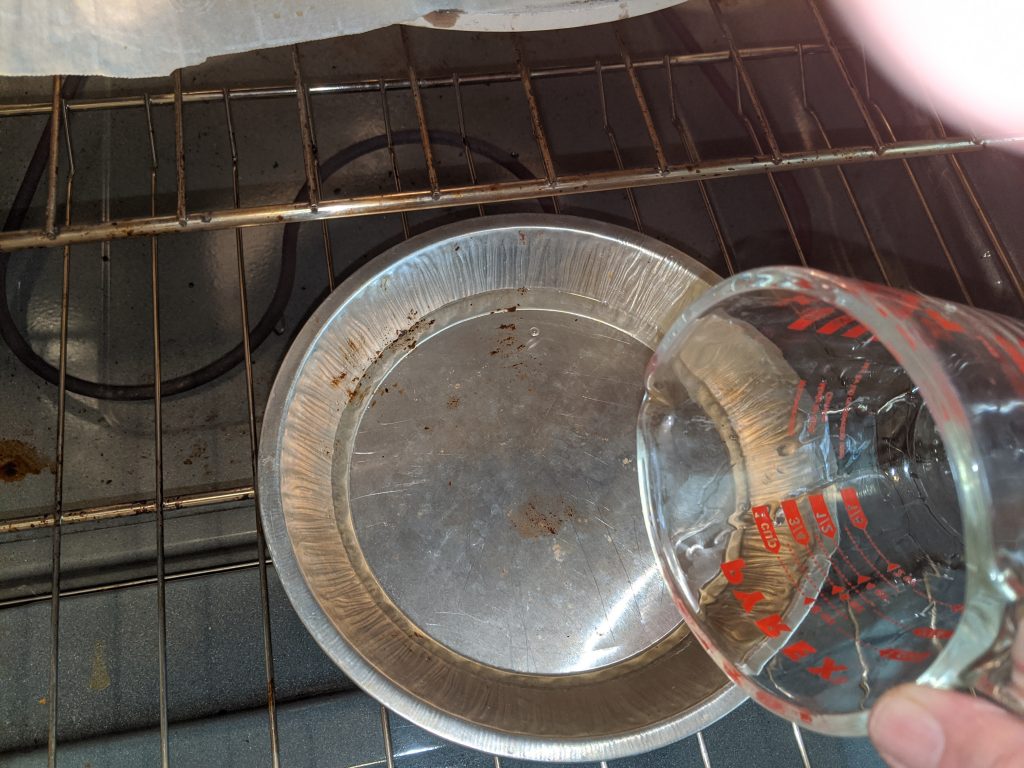
Add the cup of hot water to the pan underneath.
Immediately turn the oven down to 375° F. Set your timer for 30 minutes.
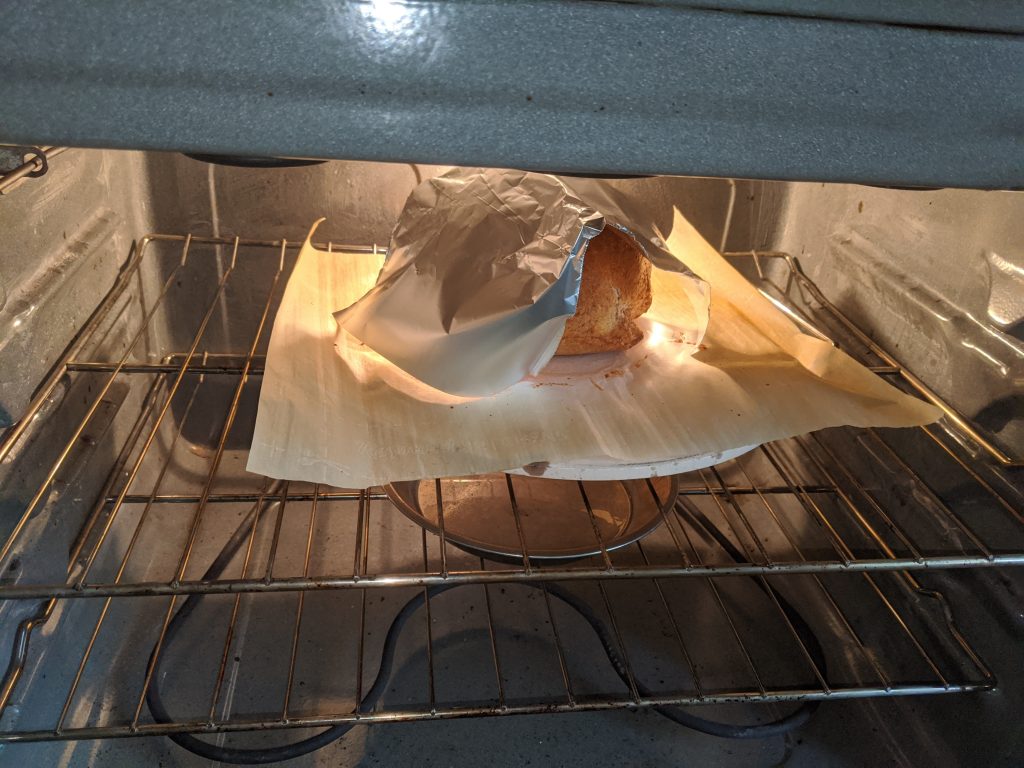
After 30 minutes, if the top of the bread looks like it’s going to burn, loosely tent it with a piece of aluminum foil.
Time an additional 15 minutes.
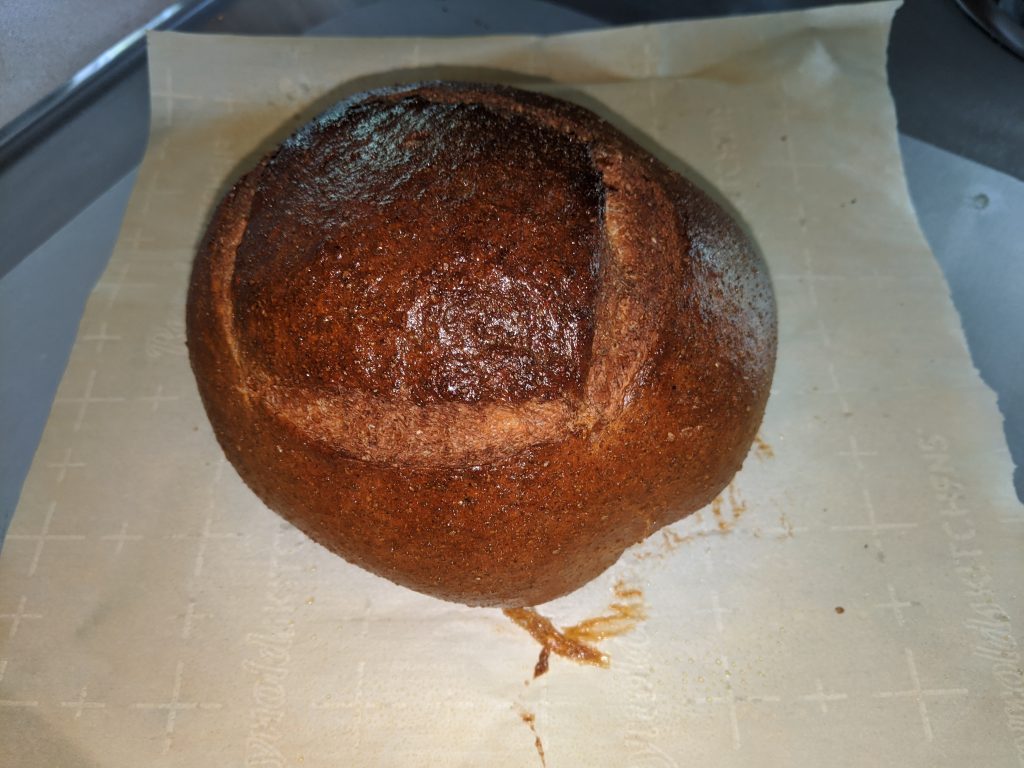
Use an oven glove to pull the edge of the parchment paper back onto the peel or paddle, and remove the loaf from the oven.
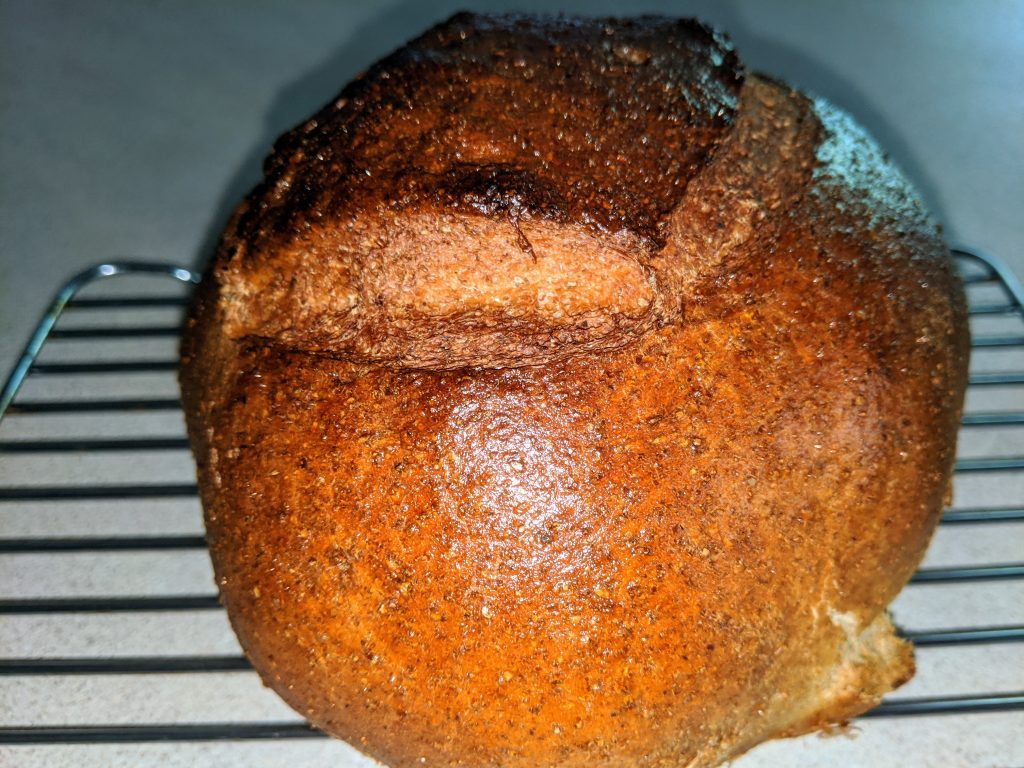
Get the bread off the parchment quickly, or its own steam will make the bottom soggy. Cool on a wire rack.
Cool at least 15 minutes.
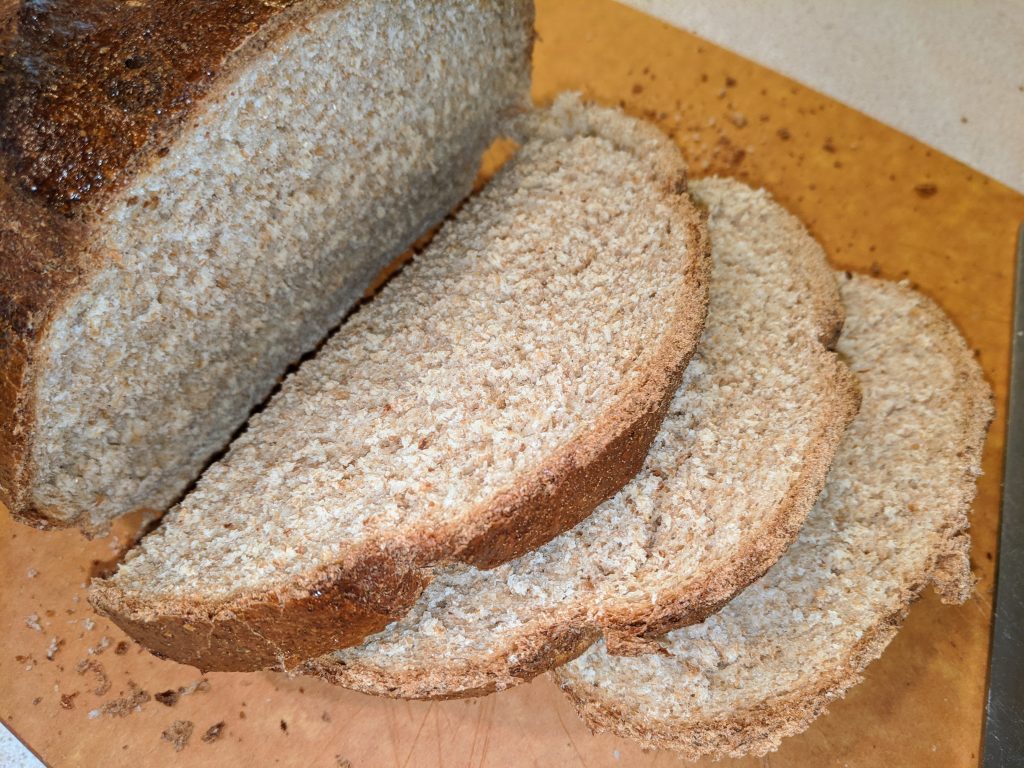
This bread is best the same day, but it will keep a day or two wrapped at cool room temperature.
